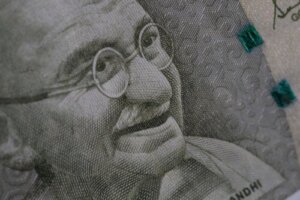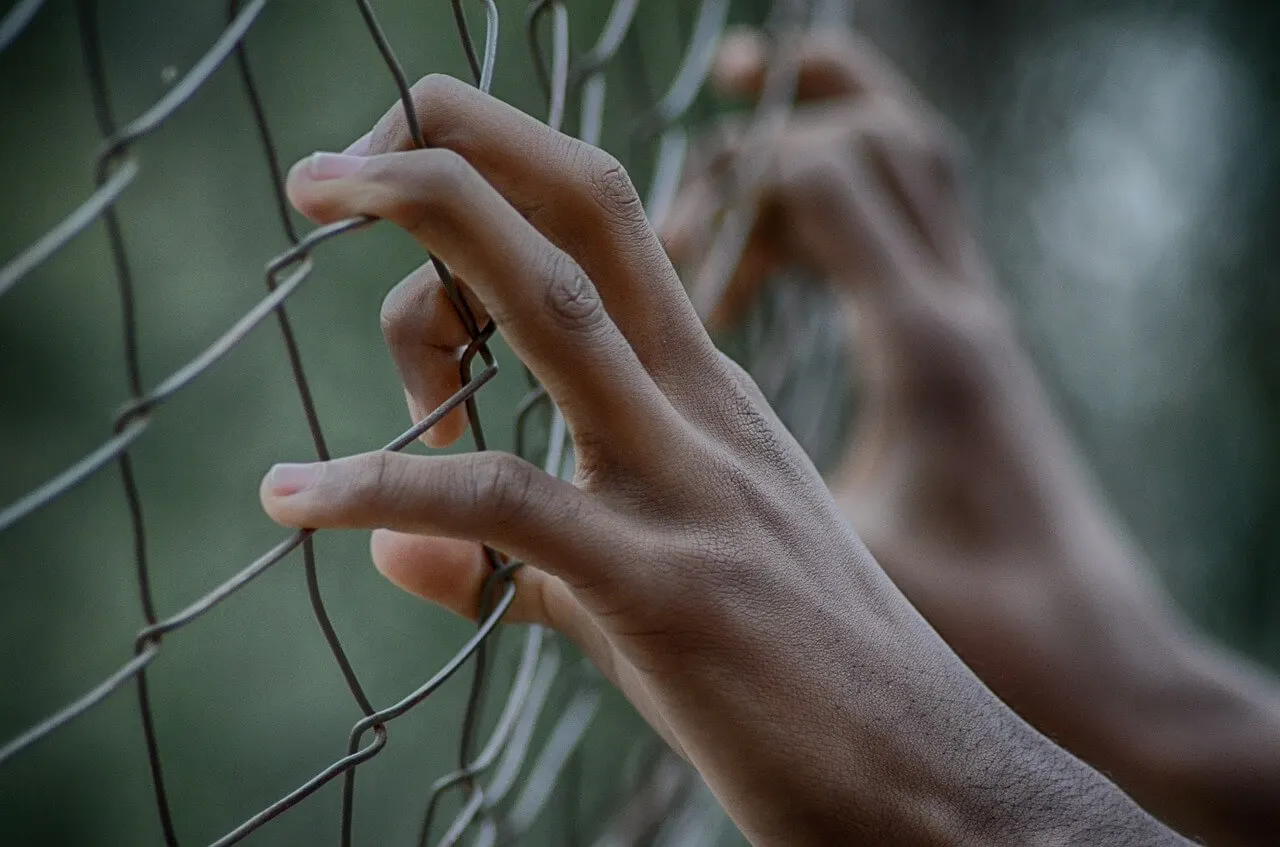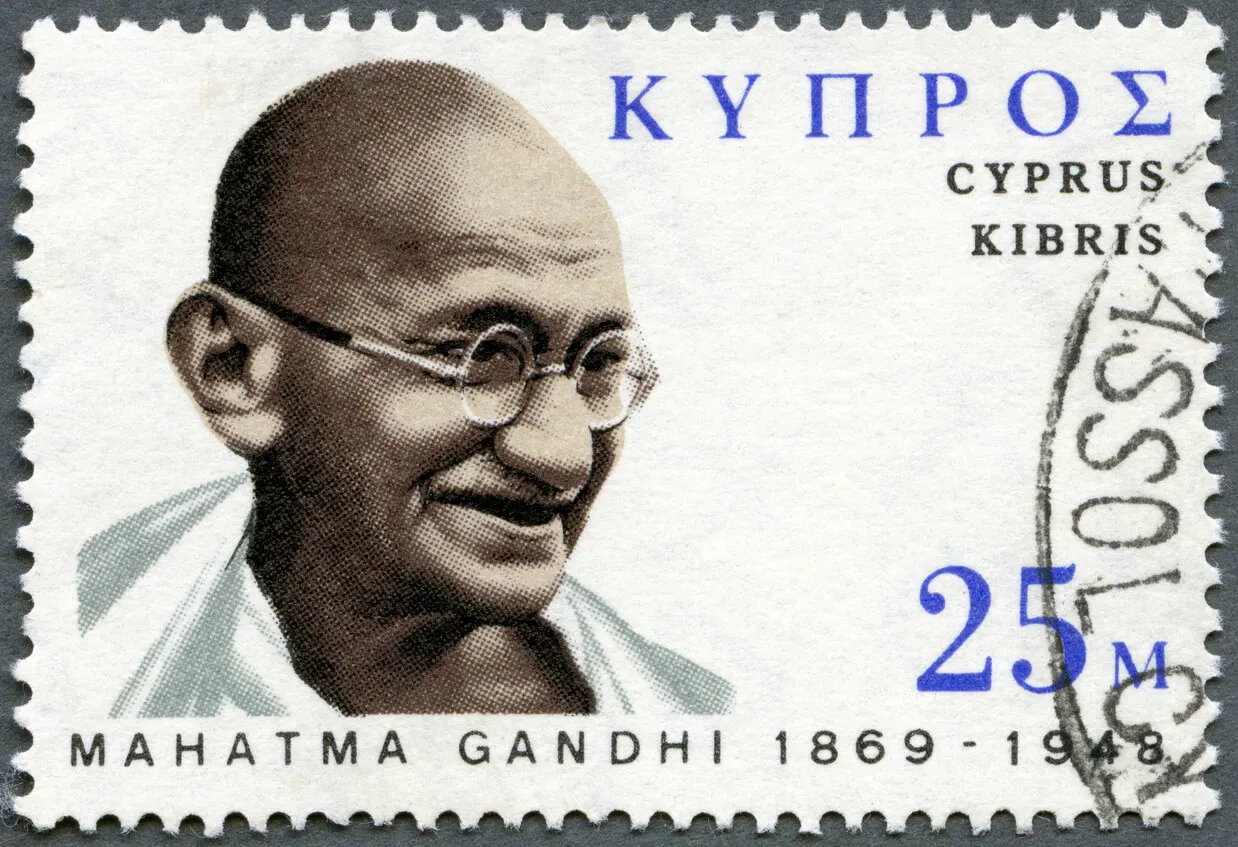Mahatma Gandhi: His Story and Struggle Against Violence

His real name was Mohandas Karamchand Gandhi, but the world knows him as Mahatma Gandhi, a name he received from the poet Rabindranath Tagore, thanks to his struggle for nonviolence. In Sanskrit it means “great soul”.
Mahatma Gandhi was a peaceful activist, Indian Hindu politician, and lawyer who became the leader of the Indian independence movement against British power. But far from galvanizing the masses to fight with weapons, he promoted peaceful resistance and nonviolent civil disobedience.
He is therefore considered a national hero in his country and a symbol of pacifist revolutions around the world. Let’s see a brief history of his life and thought.
There are many causes for which I am willing to die, but none for which I am willing to kill. -Mahatma Gandhi
The early years of Mahatma Gandhi
Gandhi was born on October 2, 1869, in Porbandar, northwest India. At that time, his country was a colony under British rule. Indians were second-class citizens in their own territory.
However, Mahatma Gandhi lived with many comforts during his youth, since he came from a well-off merchant family. Thus, he was able to go to England to study law at University College London, where he earned a degree as a barrister.
After receiving his degree, he returned to India to pursue his career there. However, he was unsuccessful, as the legal profession was over-saturated and Gandhi was not a dynamic figure in the courts.
Find out: Taoism: Four Rules of Living To Achieve Inner Peace
Gandhi’s stay in South Africa
In 1893, he moved to South Africa to work for an Indian company operating in Natal. There he suffered prejudice and discrimination because of his ethnicity. So he began to fight, through passive resistance and civil disobedience, against the laws that discriminated against Indians in that country.
In fact, in 1894 he created the Natal Congress Indian Party, which united the Indian community in South Africa into a homogeneous political force. He flooded the press and the government with denunciations of violations of the Indians’ civil rights and evidence of discrimination by the British.
Moreover, Gandhi insisted to his compatriots to challenge the law that denied the Indians the right to vote, openly, but without violence, while suffering whatever punishment that the government wanted to impose.
This struggle lasted 7 years, during which thousands of Indians were imprisoned (including Gandhi on several occasions), flogged, and even shot for protesting, refusing to register, burning their registration cards, or any other form of non-violent rebellion.
While the government succeeded in suppressing the Indian protest, foreign denunciation of the extreme methods used by the South African government finally forced the South African general, Jan Christian Smuts, to negotiate a solution with Gandhi.

Gandhi’s return to India
In 1916, Gandhi returns to India and travels throughout the country. There, he corresponded extensively with various personalities and continued to deepen his knowledge of religion and philosophy. But above all, he paid special attention to politics.
He eventually became the leader of the Indian independence movement against the British Raj. However, he never encouraged armed struggle. On the contrary, Gandhi’s nonviolence (ahimsa) promoted peaceful resistance and new modes of opposition, such as hunger strikes and civil disobedience.
The salt march
Among the most representative large-scale peaceful protests was the famous Salt March, which became one of the most important events leading to India’s independence.
In this demonstration, Gandhi himself, accompanied by dozens of disciples and journalists, walked more than 300 kilometers to the Indian Ocean, proclaiming their right to produce salt. Arriving at the place, Gandhi advanced into the water and picked up some salt with his hands.
This gesture was symbolic. It encouraged his compatriots to violate the monopoly of the British government on the production and distribution of salt. This is because the British, by occupying the territory, appropriated the production of salt, which in reality was a right that should have also belonged to the people.
In this case, the British had even imposed a tax on its consumption. But after the famous march, thousands of people all over the country defied them.
They went to the sea to collect salt, and many ended up in jail. Gandhi as well. However, the viceroy eventually relented and recognized the Indians’ right to produce it.
This march had such an impact that it became an inspiration for Martin Luther King’s nonviolent movements. And in 1930, Time magazine even compared it to the Boston tea riot episode that led to American independence.
Read about: Friedrich Nietzsche: History and Contributions to Philosophy
Mahatma Gandhi and the Indian Independence Movement
The start of the Second World War in 1939 and the fact that India participated indirectly as a British colony, caused the Indian independence movement to gain more strength. During this time, the authorities arrested thousands of people and Gandhi, now in his seventies, spent two years in prison.
However, popular pressure and the end of the war led the British to accede to the Indians’ demands for independence. Thus, the partition of India in 1947 gave rise to two countries now at odds. They were India (Hindu majority) and Pakistan (Muslim majority).

The assassination of Mahatma Gandhi
On January 30, 1948, when Gandhi was on his way to a prayer meeting, he was assassinated in New Delhi by Nathuram Godse, a Hindu radical linked to ultra-right-wing groups such as the Hahasabha Party. These groups accused Gandhi of undermining the new Indian government.
After the assassination, Godse and his accomplice, Narayan Apte, were tried and sentenced to death. However, the instigator of the assassination, party chairman Vinaiak Damodar Savarkar, was set free due to a lack of evidence.
Mahatma Gandhi’s legacy
Mahatma Gandhi’s message of peace and love transcends time and space. Martin Luther King Jr. and Nelson Mandela viewed Gandhi as a source of inspiration in their struggle. All of these remarkable people wanted to achieve equal rights for their people.
All cited sources were thoroughly reviewed by our team to ensure their quality, reliability, currency, and validity. The bibliography of this article was considered reliable and of academic or scientific accuracy.
- López M. Gandhi, política y Satyagraha. Ra Ximhai [Internet]. 2012 [consultado 7 junio de 2022]; 8(2): 39-70. Disponible en: https://www.redalyc.org/pdf/461/46123366003.pdf
- Pontara G. Gandhi: el político y su pensamiento. Polis [Internet]. 2016 [consultado 7 junio de 2022]; 15(43): 1-15. Disponible en: https://www.redalyc.org/pdf/305/30545999002.pdf
- Rendón A. Gandhi: la resistencia civil activa Polis: Investigación y Análisis Sociopolítico y Psicosocial [Internet]. 2011 [consultado 7 junio de 2022]; 7(1): 69-103. Disponible en: https://www.redalyc.org/pdf/726/72618730004.pdf
This text is provided for informational purposes only and does not replace consultation with a professional. If in doubt, consult your specialist.








